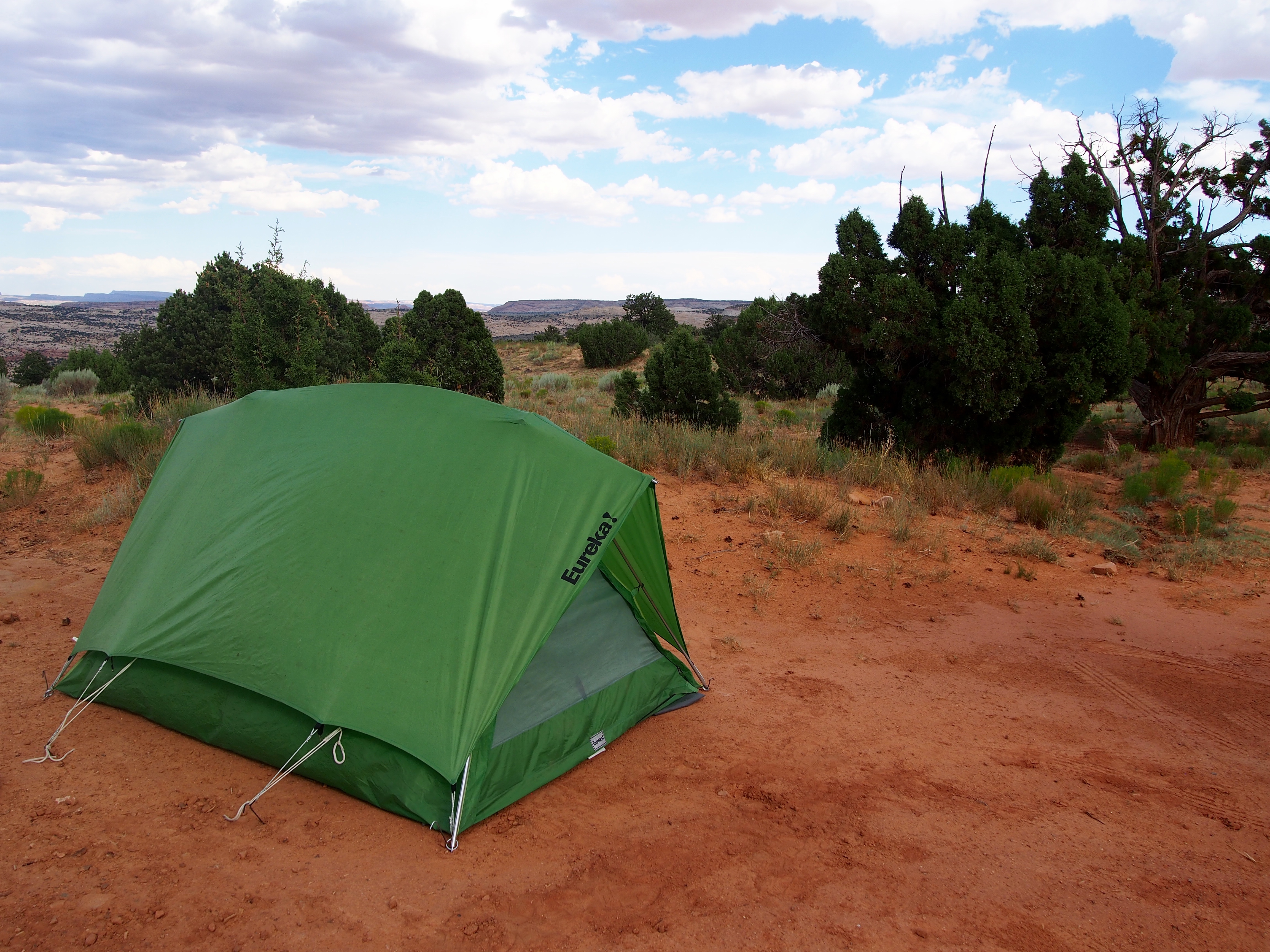An outfitter that provided shelter for 19th century pioneers on the American frontier plays the same role for present-day adventurers who scale snowy Himalayan peaks. It’s a long way from canvas covers for Conestoga wagons to nylon tents, but the idea of making reliable portable shelter remains unchanged for Eureka Tent.
One way the idea takes shape today is a tent made of paper-thin nylon, hollow aluminum rods, a bit of netting and a couple of zippers. It is roughly 5‘ x 7‘ x 3 1/2‘ and weighs in under 7 pounds. Folded to a virtually flat 6“ x 2‘ bit of fabric, its claim to be comfortable sleeping quarters for two grownups appears laughable. In fact, a six-man version of the tent has served as home three miles above sea level for mountain climbers who would likely have perished in the cold, snow and wind outside its cozy confines. “It’s a life support system,“ Eureka‘s Bill Wildprett says of the tent’s role in harsh conditions. The tent is called the Timberline because it can serve ably above that point where sheltering forests often give way to driving precipitation and bone-chilling winds. Eureka says it has sold more than 1 million Timberlines in 10 years, and they are a ubiquitous fixture at backcountry campsites from the Adirondacks to the Rockies.
Eureka began climbing the trail to the Timberline in 1895, when it appeared as a manufacturer of canvas goods. A predecessor company made wagon covers, and Eureka continued that product, along with horse blankets, flags and store awnings. It also made canopy tents for backyard weddings, circus big tops and the olive drab M*A*S*H-type military tents. Bob Markert, Eureka’s marketing director, says the company’s present product line took shape after World War II. A lot of veterans traded the military tent for the recreational type and headed for the great outdoors. As the returning soldiers were joined in the 1960s and 1970s by youngsters whose rallying cry was “Back to nature,” backpacking tents made up 75% of Eureka’s sales. “It peaked in the early to mid-70s,” Markert said of the backpacking boom. Backpacking tents now account for about 60% of Eureka sales, with larger family or car-camping tents picking up the slack. Markert theorizes many young backpackers of the 1960s are now car camping at national parks and the like with their families. “They see our family tents as a traveling motel room,“ says Markert, noting the tents are cheaper alternatives to trailers or lodging.
A family tent with a 12-foot-square floor and an 8-foot ceiling weighs under 30 pounds and folds to 1‘ x 3‘. Markert says Eureka‘s family tent sales have benefited from the onslaught of small foreign cars, whose owners need a tent that takes up a minimun of space.
The most significant post-war development in tents was the external frame pioneered by Eureka. “It allowed a whole new way of thinking,“ Markert said. “You put the frame up first and hang the tent inside it.“ This meant no more crawling into a musty tent and putting up poles with the canvas draped about you. It also meant tents could be self-supporting and unanchored to their surroundings. In a conventional tent, poles are held aloft by lines running in several directions. Let one line go slack and the whole tent comes tumbling down. With external frames, lines running from the tent out to stakes are eliminated. External frame tents are freestanding. If you find yourself lying on a tree root, you pick the tent up as it is and move it to more comfortable ground. External frame tents make camping more trouble-free and, Markert believes, more popular.
The other significant tent development was the substitution of nylon for canvas as the primary material. Breathable like canvas, nylon was lighter, less bulky and resistant to mildew. It did not have canvas’ water-resistant quality, however, and had to be coated with waterproofing. The coating sacrificed nylon’s breathability and the first tents made from it were sweat boxes, though they sold well. The answer to waterproofed nylon’s liabilities was the double-walled tent. The inner walls of the tent, hung inside the external frame, are breathable, non-waterproof nylon. The outer walls, stretched over the frame about 6 inches from the inner walls, are coated, waterproof nylon. The arrangement makes tents waterproof, yet breathable. The insulating air space between the walls makes the tent cooler in summer and warmer in winter.
Employing 300 people on the Southern Tier, Markert says Eureka sells about 150,000 tents a year, making it the acknowledged sales leader among quality tent makers. Tent styles include the conventional A-frame, the dome and blends of the two.
Eureka supplies tents for expeditions to the Himalayas and other exotic locales, seeking a demanding test for its products and a reputation as the choice of adventurers. A recently launched coed assault on Mount Everest and two men on a multi-year, 28,000-mile canoe trip were outfitted by Eureka. The company’s main customers, however, are those who car camp or backpack on the weekend to enjoy Adirondack fall foliage and other American outdoor pleasures. Eureka seeks to outfit these campers on the very first trip, to help ensure they have a good time.
Published October 1983

